Best Diet Tips for Overweight Cats: How to Help Your Cat Lose Weight Safely
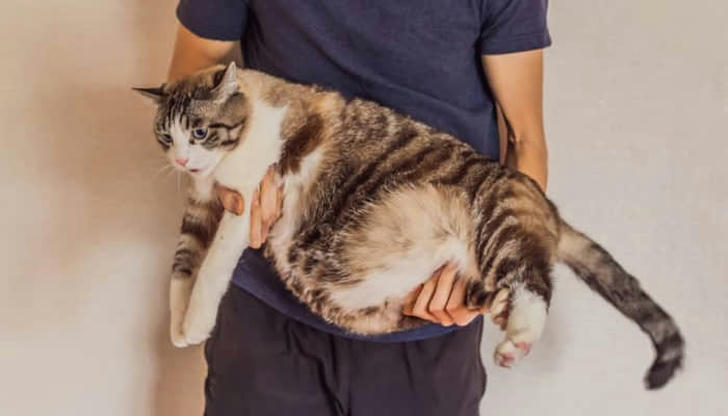
Has your cat stopped jumping onto the couch as easily as before? Or maybe that once-sleek body has turned a little rounder over the years.
You're not alone --- studies show that over half of all domestic cats are overweight.
It might look cute at first, but those extra pounds come with real health risks. Feline obesity can lead to diabetes, arthritis, heart problems, and even shorten your cat's lifespan. The good news is that with a few small, consistent changes, you can help your cat shed weight safely and naturally.
This guide breaks down the best diet tips, feeding strategies, and daily habits to support your cat's health --- without stress, crash diets, or hunger.
Let's get your cat back to feeling light, active, and happy again.
1. Spotting the Signs: Is Your Cat Really Overweight?
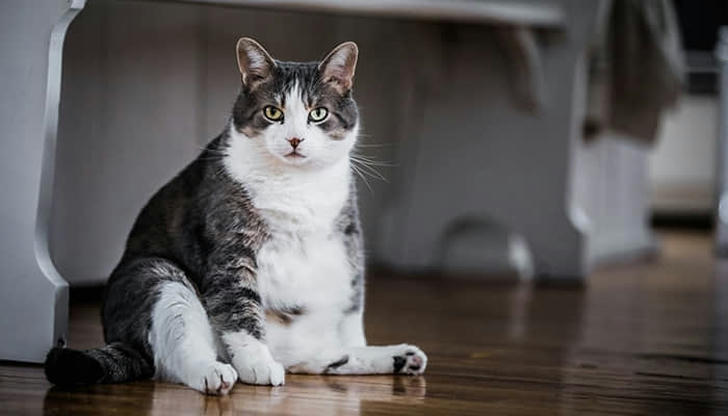
Many cat owners underestimate what a "healthy" weight actually looks like. Cats are naturally sleek, and a round belly isn't just fluff --- it's usually fat.
Try these quick at-home checks:
Rib Test: You should be able to feel, but not see, your cat's ribs easily.
Waistline Check: Viewed from above, your cat should have a visible waist just behind the ribs.
Side Profile: The belly should tuck up slightly toward the hind legs --- not hang down in a straight line.
For a more precise measurement, veterinarians use a Body Condition Score (BCS) on a scale of 1 to 9, where 5 is ideal. If your cat scores 6 or above, it's time to take action.
2. Understand Why Cats Gain Weight
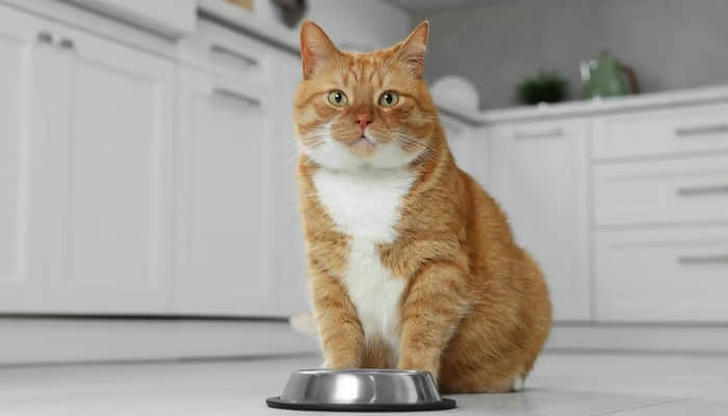
Weight gain in cats isn't always about overeating --- it's usually a combination of lifestyle, diet, and instinct.
Here are the most common reasons:
Too many calories for too little movement. Indoor cats burn fewer calories than outdoor explorers.
Free-feeding or "always full" bowls. Cats graze all day when food is constantly available.
Carb-heavy diets. Many dry foods contain fillers like corn or rice that cats don't need.
Treat overload. Even a few extra treats a day can add up.
Emotional feeding. Many owners show love through food --- and cats learn to meow for it.
Understanding the "why" helps you fix the problem without guilt. You're not depriving your cat --- you're giving them the gift of health and comfort.
3. Calculate the Right Calorie Intake
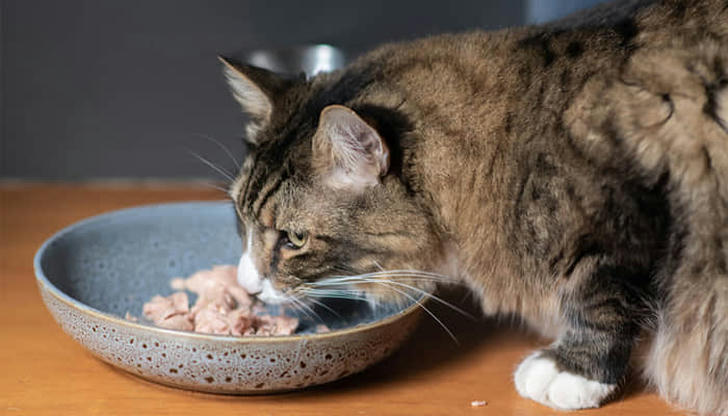
Just like humans, cats lose weight when they burn more calories than they consume --- but the process needs to be gradual and controlled.
A rough rule of thumb for daily maintenance calories is:
20 × your cat's ideal body weight (in pounds) = daily calories.
To support healthy weight loss, start with 80% of that number and monitor your cat's progress. For example:
A 12 lb cat should maintain on ~240 calories/day.
For weight loss, reduce to ~190 calories/day.
Important notes:
Never cut calories by more than 20% suddenly --- it can cause fatty liver disease (hepatic lipidosis).
Aim for 1--2% weight loss per week (slow and steady wins).
Divide meals into 2--3 smaller portions throughout the day.
If your cat acts excessively hungry, consult your vet about adjusting protein content rather than calories.
4. Choose the Right Food: High Protein, Low Carbs, Real Moisture
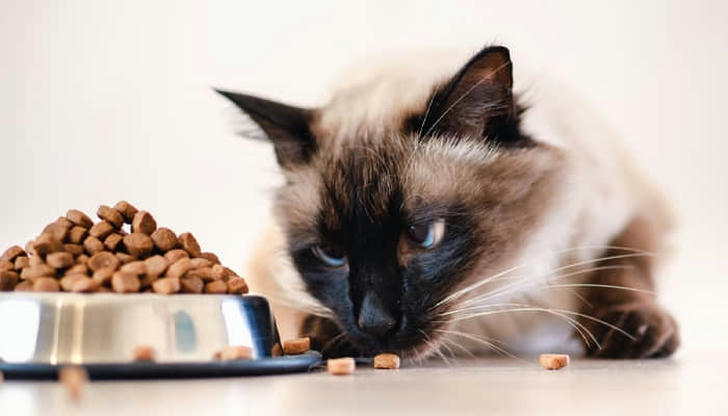
Cats are obligate carnivores, which means their bodies thrive on protein, not grains or starches.
The wrong food --- especially low-protein dry kibble --- can sabotage your weight-loss plan even if portions are small.
Here's what to look for:
High-protein, low-carbohydrate food: Look for real meat (chicken, turkey, fish) listed as the first ingredient.
Wet food over dry food: Canned or pouch food helps with hydration and keeps cats feeling fuller with fewer calories.
Avoid fillers and by-products: Skip foods with corn, wheat, soy, or vague "meat meal" labels.
Balance with fiber and moisture: Fiber supports digestion, and moisture supports metabolism.
If you prefer dry food for convenience, mix it with wet food or add warm water or bone broth to increase hydration.
A good cat diet mimics nature --- protein-rich, moisture-balanced, and portioned with care.
5. Portion Control: The Secret to Sustainable Weight Loss

Even the healthiest food can cause weight gain if your cat eats too much of it. Portion control is the key to safe, lasting results.
Ditch the "free-feeding" bowl. Leave food out all day, and your cat will nibble constantly out of habit, not hunger.
Switch to scheduled meals. Feed two to three times daily at consistent times.
Use a measuring cup or digital kitchen scale to ensure accuracy --- "a little extra" adds up quickly.
Limit treats to 10% or less of your cat's daily calories.
Choose small, healthy rewards such as freeze-dried chicken, tuna flakes, or a few pieces of their regular food.
6. Encourage Movement and Play
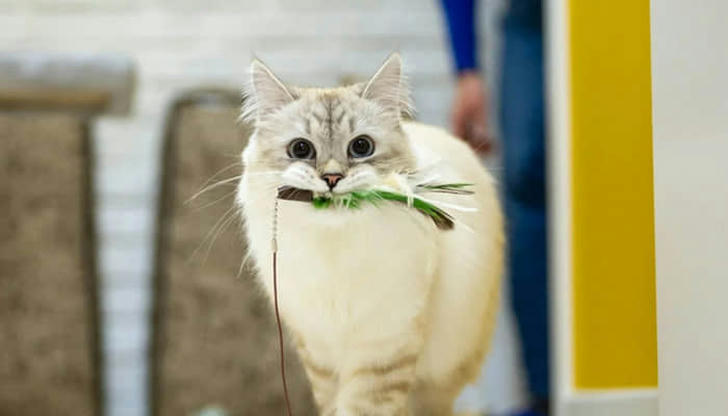
Diet alone can't do all the work --- your cat needs to move. Regular play not only burns calories but also reduces boredom and anxiety that often lead to overeating.
Try these easy ways to boost daily activity:
Interactive play: Use feather wands, laser pointers, or string toys for short bursts of fun.
Puzzle feeders or slow feeders: Make your cat "work" for food, mimicking natural hunting behavior.
Vertical spaces: Add cat trees, window perches, or wall shelves to encourage climbing.
Set playtime rituals: Ten minutes twice a day is enough to make a difference.
7. Stay Consistent and Track Progress
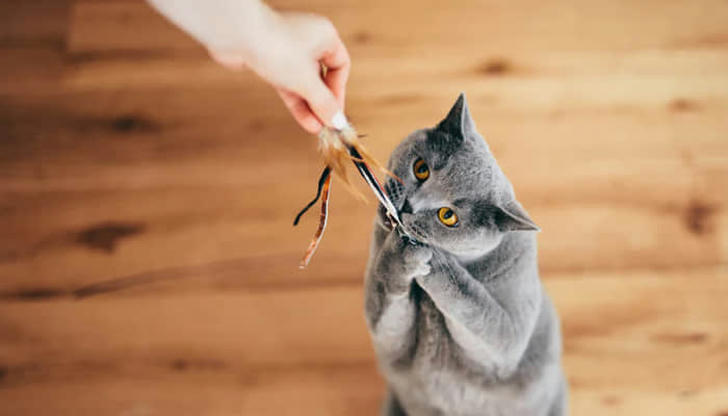
Cats are creatures of habit --- and so is weight loss. The biggest mistake owners make is starting strong, then giving up too soon.
Weigh your cat weekly. Use the same scale, at the same time of day.
Track it. Keep notes in your phone or a small journal.
Celebrate small wins. Even a few ounces lost means progress.
Adjust gradually. If weight stalls for more than 3 weeks, reduce calories by 5--10% or increase activity.
Consistency, not speed, determines success. Slow, steady progress ensures your cat stays healthy and doesn't regain the weight.
8. Don't Forget Hydration

Cats on dry food often don't drink enough water, which slows metabolism and makes them feel hungrier.
Hydration helps everything --- digestion, satiety, and overall organ function.
Ways to help:
Switch partly or entirely to wet food.
Add low-sodium chicken broth or tuna water to meals.
Provide a pet water fountain --- cats love running water.
Place multiple water bowls around the house.
9. When to Talk to Your Vet
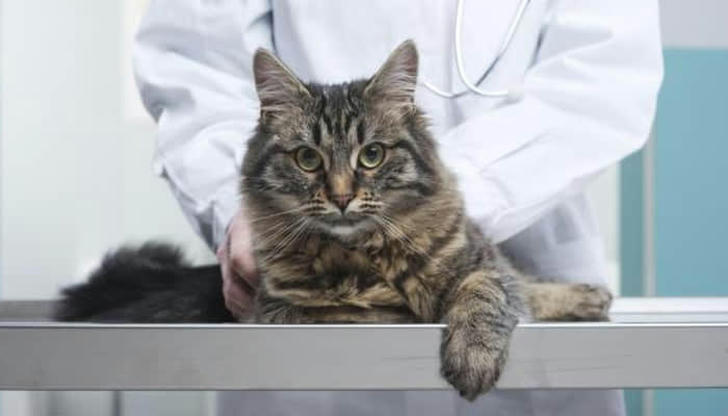
Sometimes, despite your best efforts, the scale doesn't move --- or moves too fast. That's when professional advice matters.
Call your vet if:
Your cat refuses to eat or loses weight too quickly.
You notice vomiting, diarrhea, or fatigue.
Your cat's weight loss plateaus for more than a month.
A veterinarian can test for thyroid issues, diabetes, or liver problems, and suggest prescription diets or customized nutrition plans.
It's always safer to collaborate than to guess --- your cat's metabolism is delicate, and expert guidance ensures success.
Helping your cat lose weight isn't about restriction --- it's about restoring balance.
A healthy weight means easier movement, better sleep, fewer vet visits, and a longer, happier life.
Start small: measure food, play a little more, stay consistent. You'll notice subtle changes --- brighter eyes, smoother fur, and renewed energy.
